About this find
This Saxon glass drinking horn is one of a pair. It is very rare, only 3 have been found in
the whole of England and 2 are from here in Rainham! Similar horns have been found in
France and Germany. Drinking horns like this would have been used at special feasts and
they would have been buried in the grave of an important Saxon person so that they
could continue to drink and party in their afterlife.
KEY FACTS
- FOUND: in 1937, in a Saxon burial ground discovered by workers digging for gravel at Gerpin’s Lane, Rainham
- NOW: the British Museum (not on public display). Replica in Havering Museum and more finds from the burial ground are at the Valence House Museum.
- MATERIAL: glass
- MADE: 6th or 7th Century (AD 550-700)
TIMELINE:
Roman
AD 43-410
Roman
AD 43-410
Roman
AD 43-410
What other events were happening around the world at this time?
- AD 610 - Islam is founded
- AD 620 - Discovery of Antarctica by Polynesian Māoris (New Zealand)
Think like an archaeologist!
Look carefully at the drinking horns. What questions do you have about them?
Who?
What?
When?
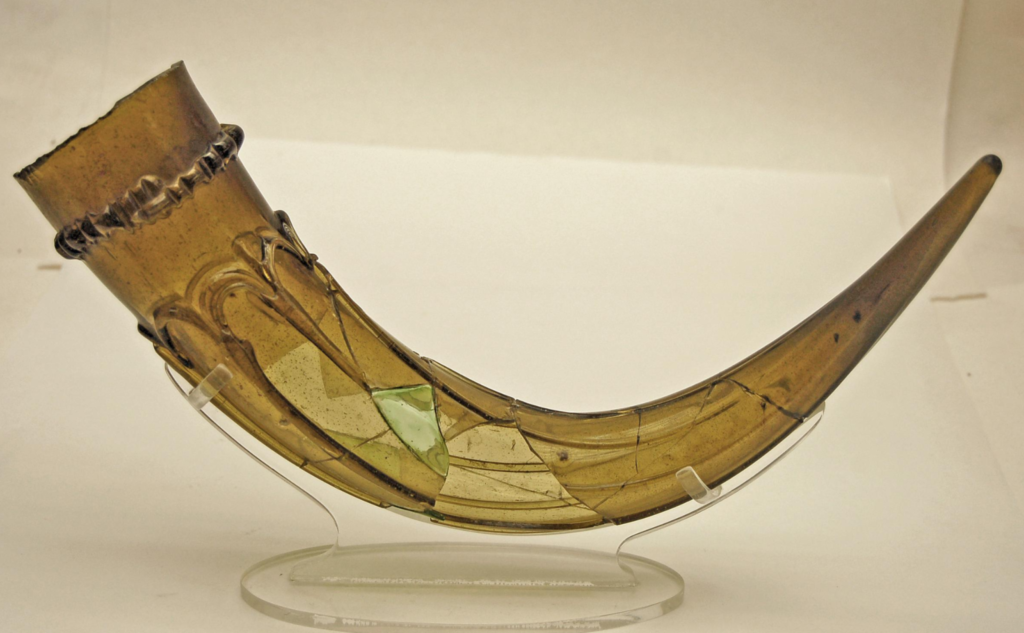
Where?
Why?
How?
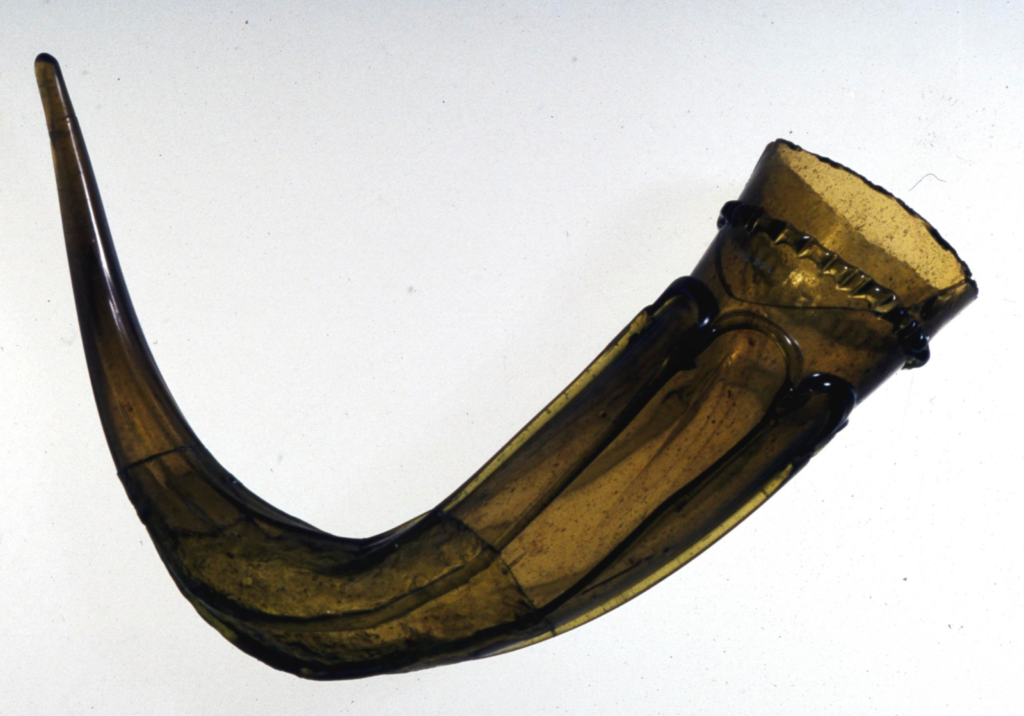
Think like and archaeologist:
The Saxon cemetery at Gerpin’s Lane
The acidic soil meant that no skeletons were found, instead their bones had dissolved over time. Sadly, the burial ground was also not recorded by archaeologists.
We don’t know how many people were buried there.
The only information we have comes from some special artefacts, found by the gravel workers, which would once have been buried with the dead for their afterlife. Unfortunately, we don’t know which graves the objects were buried in or which artefacts were buried together.
What was found
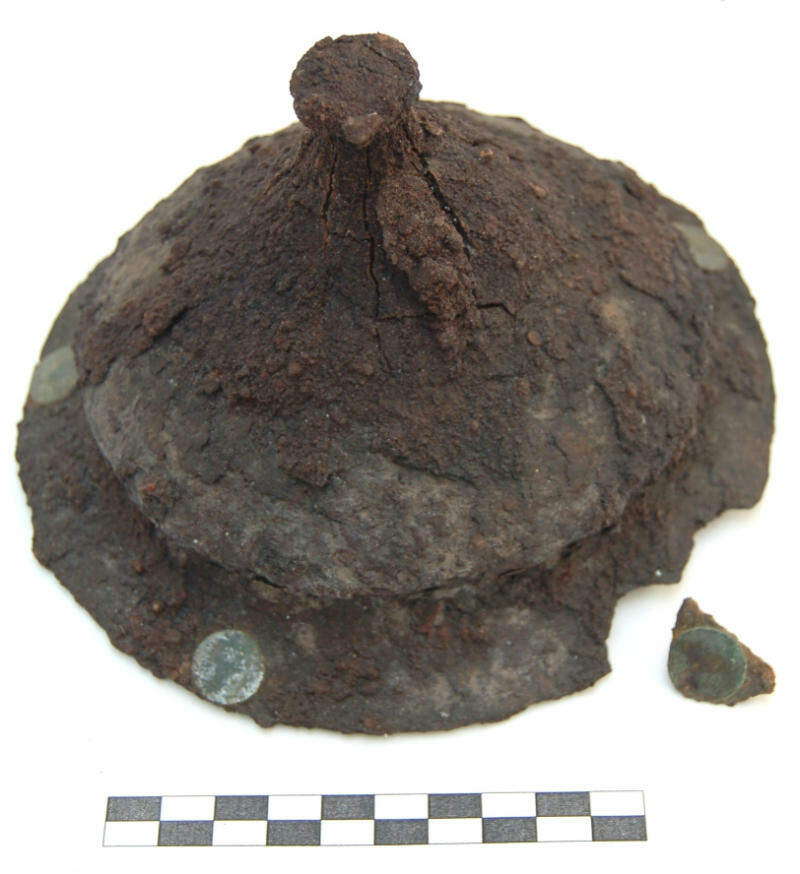
© The Trustees of the British Museum
Metal shield bosses, like this one, which would have been in the middle of a wooden shield.
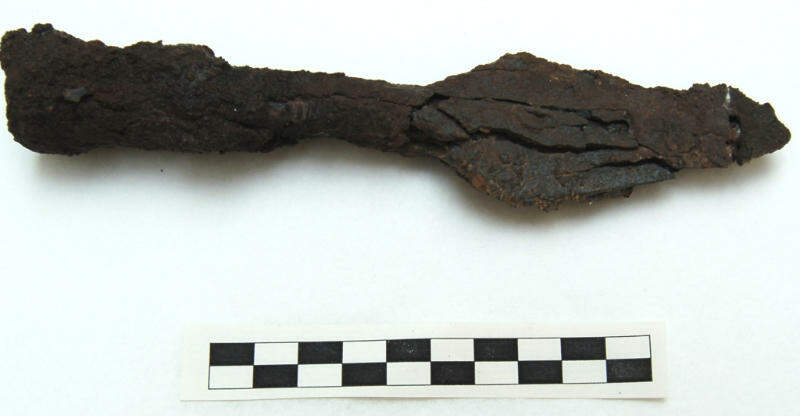
© The Trustees of the British Museum
7 spearheads like this one

© The Trustees of the British Museum
A possible seax (a Saxon knife)

© The Trustees of the British Museum
Metal shield bosses, like this one, which would have been in the middle of a wooden shield.
The gravel workers also found pottery, buckets, 3 bronze brooches, 2 glass beads, a ring, and a gold coin showing the Byzantine emperor Maurice Tiberius (AD 582-602) which had been used in a necklace.
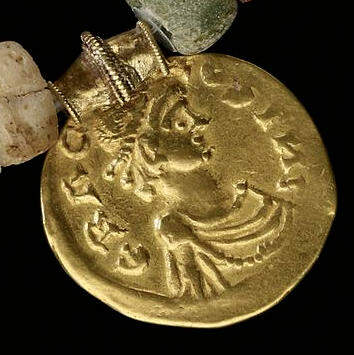
This gold coin from Sarre, Kent showing emperor Maurice Tiberius has also been turned into a necklace pendant.
© The Trustees of the British Museum
The fragile glass drinking horns and the gold coin tell us that important Saxon people may have been buried at the cemetery because these are rare and expensive objects. The drinking horns would have been made by hand by a very skilled craftsperson in England or crafted abroad and then brought here by traders.
Which fantastic Saxon finds from Rainham can you spot in this photograph from 1953?
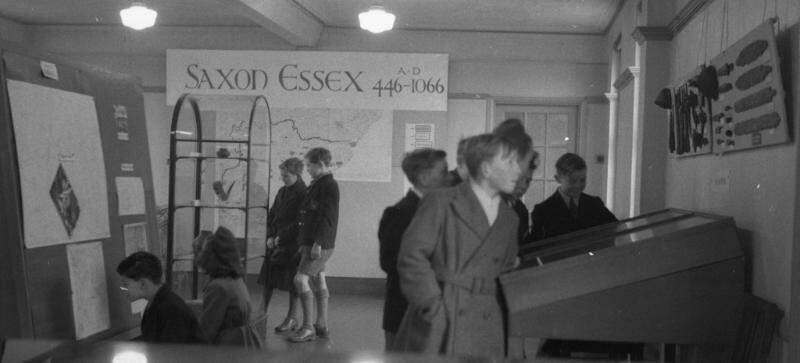
© The Trustees of the British Museum
The Saxon Prittlewell Prince burial, found in Southend-on-Sea, Essex and the Sutton Hoo burial mounds in Suffolk, also include rare artefacts made from precious materials and date to around the same time as the Rainham drinking horns. Both of these sites were carefully excavated by archaeologists but acidic soils also meant that skeletons were not found. Only tiny traces of tooth enamel were discovered at Prittlewell.
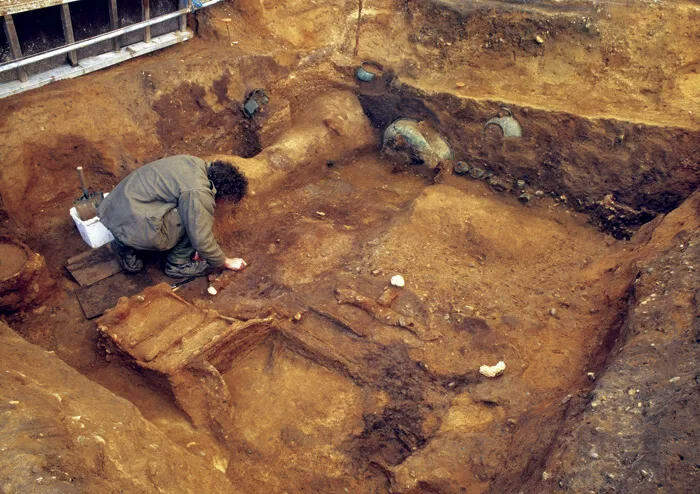
Excavating the princely burial at Prittlewell
© MOLA
An artistic reconstruction of the Prittlewell burial by Faith Vardy showing the grave goods which would help the dead person in the afterlife
© MOLA
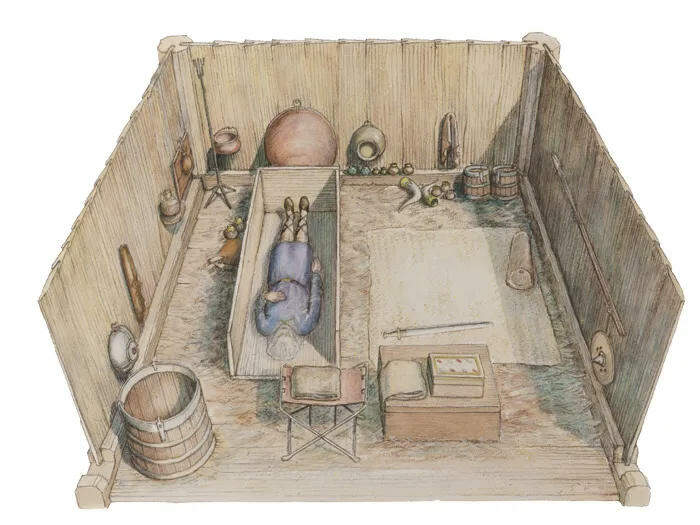
Cross-curricular classroom links:
ENGLISH: why not explore the Anglo-Saxon hero Beowulf’s adventures?
The epic poem Beowulf is set in the 6th Century and tells of the Great hero’s battles with the monster Grendel and a dragon. Fortunately, the Old English has been updated and there are excellent versions for Key Stage 2 pupils.
The Saxons were also big fans of alliteration and wordplay so look out for kennings too!



